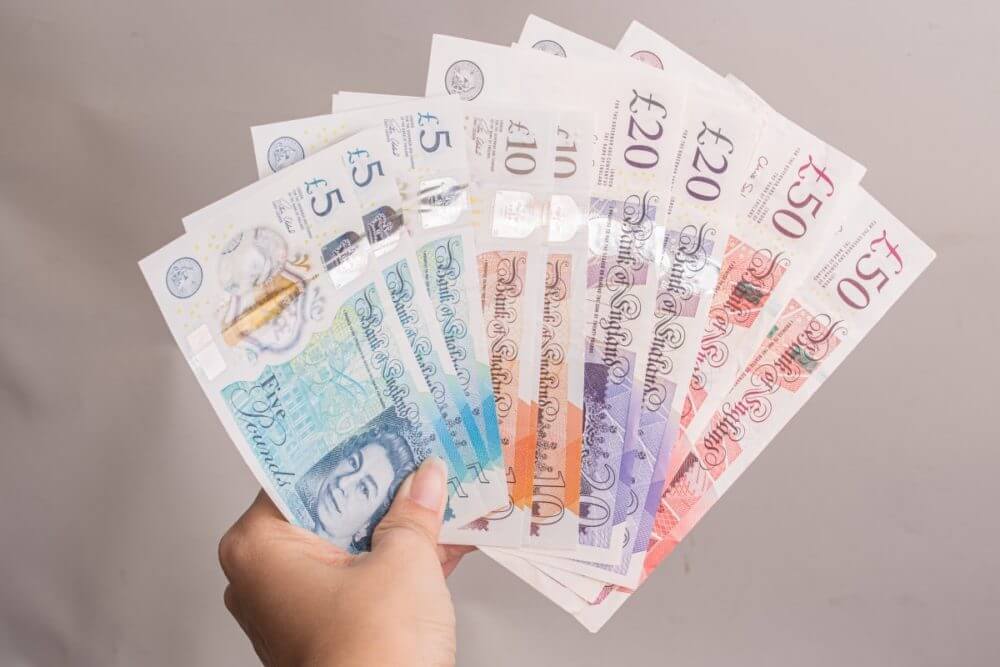
The U.S. dollar plummeted while Euro and Sterling rallied
The U.S. dollar ended in the deep red on Friday. It was headed for its worst week since early February against major peers as some of the heat faded from the currency’s breakneck 10% rally. Investors’ flight to safety supported the greenback, prompted by fears of the impact of surging inflation and Russia’s invasion of Ukraine. However, after increasing in all but two of the last 14 weeks, the dollar index reversed the course. It was on track for a 1.6% weekly drop today.
The dollar index decreased by 0.1% on the day to 102.82 against the basket of six other major currencies. Last Friday, it skyrocketed to the highest level since January 2003 at 105.01. Analysts noted that the dollar’s weakness partly reflected a recent drop in U.S. Treasury yields as the latter adjusted for inflation. However, they questioned whether the pullback would last.
Kenneth Broux, the currency strategist at Societe Generale, stated that it had raised questions about whether the U.S. currency really has reached exhaustion. Still, it is too soon to say the greenback has peaked. Broux thinks that the dollar will likely only weaken longer-term if evidence of economic strength builds outside the United States, particularly in China and Europe. He also added that China’s move to cut a key lending benchmark would probably help.
Currency analysts at MUFG suggested that a recent build-up of long USD positions could weigh on the greenback. Meanwhile, other safe-haven currencies have soared this week as global equities have come under pressure. Despite the latter, stocks in Europe managed to claw back some ground on Friday.
How is the Swiss Franc trading after its recent gains?
The Swiss franc remained on track for a more than 3% weekly gain against the dollar. The Japanese yen was also set for a nearly 1% weekly gain on Friday. The Swiss franc climbed up by a quarter of a per cent to 0.97040 franc. The yen declined by 0.2% to 128.060 yen, but it maintained its earlier profits.
In Europe, the common currency has also benefitted from the dollar’s weakness. The Euro was on track for a weekly gain of 1.7% today. But it traded broadly flat at $1.05875 at last. On the other hand, the British Pound seemed set for its biggest weekly gain since December 2020. The Sterling exchanged hands largely unchanged on the day at $1.24810, though.
In Asia, China stocks led emerging market shares higher on Friday. Beijing’s larger-than-expected cut to a key borrowing rate boosted the market, while a softer greenback sent an index of currencies to its highest point in two weeks.
China’s main share indexes soared by 1.6% and 2% after Beijing announced lowering the five-year loan prime rate by 15 basis points (bps) to 4.45%. The government aims to bolster the ailing economy.
Thanks to this step, MSCI’s index of stocks edged up by 2%, gaining more than 3% on the week and tracking its best weekly performance since mid-March. Furthermore, most other EM Asian indexes rallied between 1% and 2.2%, while those in Turkey and South Africa added 0.4% and 0.5%, respectively.
Despite such gains, stocks have still clocked losses every month this year and were eyeing their fifth in May. Traders remain fearful over the impact of soaring inflation, China’s coronavirus lockdowns and monetary tightening in developed economies.
What do the analysts forecast?
Chris Turner, the global head of FX Strategy at ING, noted that he doesn’t expect a strong recovery from here. Some stability in China’s renminbi has provided temporary support this week. However, the fact is we’ve got the strong USD and concerns over Chinese and European growth very much still with us.
On Friday, EM currencies seemed set for their first weekly gain in seven, supported by a glum week for the greenback, which lost steam after a breathless 14-week rally and amid a retreat in U.S. Treasury yields. Mexico’s peso and South Africa’s rand jumped by 0.9% and 2% on the week. The rand also gained thanks to a 50-basis point lending rate increase by the central bank on Thursday.
Meanwhile, Turkey’s lira remained the outlier, dropping by 0.3%. It has remained in the red for the 11 sessions out of the last 12. Some upbeat data did little to boost the struggling currency.


